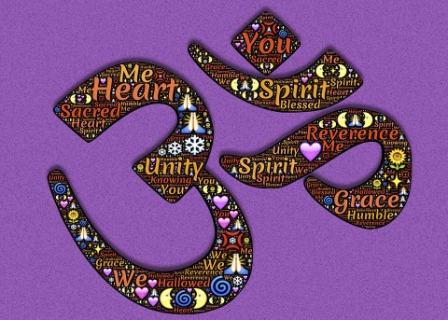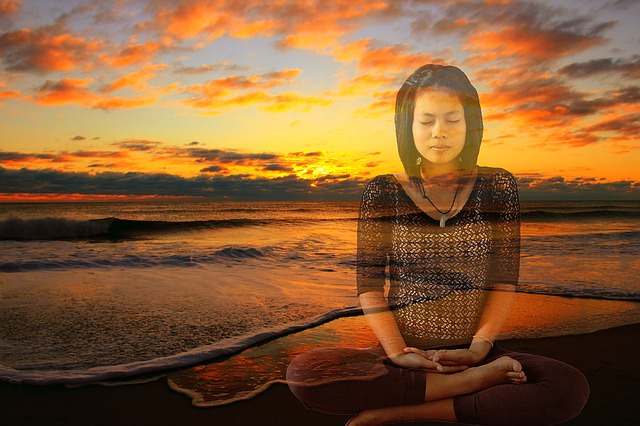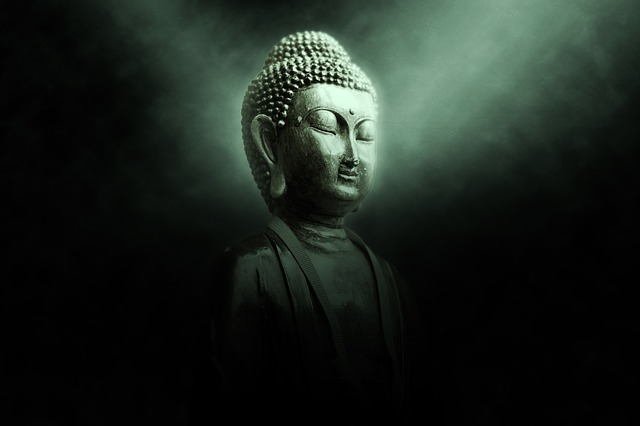Meditation: Origin, Types and Practice Techniques
 Dictionary offers meaning of meditation as, “continued or extended thought, reflection, contemplation or spiritual introspection”. Meditation is termed as orientation towards inward journey. It is normally practiced at personal level Meditation Origin.
Dictionary offers meaning of meditation as, “continued or extended thought, reflection, contemplation or spiritual introspection”. Meditation is termed as orientation towards inward journey. It is normally practiced at personal level Meditation Origin.
Origin of Meditation:
Written history of Meditation dates back to more than five thousand years, however it was originated and practiced inIndiasince ancient times. Vedas, the Hindu scriptures have details of meditation being practiced for spiritual development. Ancient Hindu saints and monks practiced meditation, intensely in mountains and jungles etc.
There are several examples of well known practitioners of meditation inIndia. Dhruv, in his childhood, practiced meditation for several years in dense forests. Name of Pole star has been accorded to his name. Lord Mahavira, the last Jain Tirthankara practiced meditation for twelve years prior to attaining salvation. Buddha also practiced meditation for years and attained enlightenment after consistent forty nine days of meditation. These are only a few examples of practitioners of meditation in Indian history. Meditation has been an established science inIndiafor tens of thousands of years.
In addition to Buddhism, Hinduism and Jainism inIndia, meditation was also practiced in almost all other religions of this world such as Baha’i faith, Christianity, Islam and Judaism. Several scholars, teachers and saints in these religions promoted meditation as a part of spiritual practice.
Ancient Hindu saint, Maharshi Patanjali (200 B.C.) was the proponent of Ashtang Yoga. He is considered the ‘Father of modern yoga’ because of his writings, ‘Yoga Sutras’. He explained in detail way of salvation for a common man by eight steps of yoga. These eight steps are,
Yama: It is related to moral code of conduct for yogis to restraint. There are five great vows to be practiced by human beings. These are Ahimsa (Non violence), Satya (Truthfulness), Asteya (Non-stealing), Brahmacharya (Celibacy) and Aparigraha (Non coveteousness).
Niyams: Niyams suggest you about self purification. There are five such regulations to be followed. These are, Shaucha (Purity), Santosha (Contentment), Tapa (Austerity), Swadhyaya (Self Education) and Ishwar Pradnidhan (God realization). Practicing Yama and Niyama help inner development and establish positivism in life.
Asanas: Through physical postures one can learn to balance and harmonize physical, mental and emotional bodies.
Pranayama: Pranayama is a set of breath control exercises. It helps longevity, mental concentration and inner peace.
Pratyahara: It involves withdrawal of mind from senses and making them introvert.
Dhaarna: This is first stage of meditation that leads to concentration.
Dhayana: Dhyana is state of meditation. It is not a technique rather a state of mind. Regular practice of meditation can take one to state of awareness.
Samadhi: This is the last stage of Ashtang yoga. Practicing Samadhi leads to become one with his true self.
Thus by gradual upliftment and consistent practice one can attain salvation or Samadhi. Meditation has been accorded higher place in this process.
In old times, students of meditation were trained to achieve perfection in first six stages of Ashtang yoga before practicing meditation. Their body and mind were fully trained to achieve various benefits of meditation and subsequently reaching final stage of Samadhi. In modern age, one can directly learn and practice meditation but it is advisable to learn and practice previous steps of Ashtang yoga to reap more benefits.
Meditation in modern age:
Meditation has gained momentum in last approximately one hundred years with various cultures of this world coming closure to one anther. Several Indian techniques traveled fromIndiato Europe andUnited States. Ayurveda, yoga and meditation are few examples.
Meditation is a personal and self regulatory practice. From the beginning of its discovery it was used for spiritual progress. In modern times people are using it more for regulating body and mind functioning, as it helps bringing mental faculties under greater control.
Meditation is increasing in popularity in western world because of several health benefits associated with it at physical, mental, social and spiritual levels.
Types of Meditation:
Meditation is more about journey of awareness. Based on direction of journey, meditation techniques are divided in two categories.
Those techniques which take your awareness outwards.
Techniques that take your awareness inwards.
There are also references of third category in which awareness is taken in both directions.
Based on these categories there are various methods of meditations. However, no specific guidelines are given on types of meditations. Some popular methods of meditation are given here.
Alpha Meditation: It is practiced while practitioner is at alpha state of mind. This state is between being completely awaken and nearly sleep. At alpha level brain waves are at 7 to 14 cycles per second.
Mantra or Japa Meditation: In this meditation ‘Mantra’ in form of a word or a phrase is used as an object of focus. ‘Aum’ is a powerful mantra which signifies essential vibration of the universe. Mantras are repeated mentally to reach meditative state.
Mindfulness Meditation: This meditation is about being aware of the sounds and activities around you. Mind does not focus on one particular thing.
Preksha Meditation: This meditation was practiced by Lord Mahavira. Preksha meditation is a technique of meditation for attitudinal change, behavioral modifications and integral development of personality.
Samathi Meditation: It is a type of Buddhist meditation and is based on focusing attention single pointedly.
Transcendental Meditation: It is a simple technique of deep relaxation and rest. It does not involve concentration or visualization. In recent time it has been popularized by Maharshi Mahesh Yogi.
Vipassna Meditation: Vipassna meditation is a type of mindfulness meditation and is one of the most ancient Buddhist techniques. Vipassna practice is aimed at seeing things as they really are in their true nature of reality. It aims for total eradication of mental impurities and the resultant highest happiness of full liberation.
Yog Nidra: In yog nidra, practitioner appears to be sleeping but the consciousness is functioning at the deeper level of awareness. It is a state of mind in between wakefulness and dream.
Practicing Meditation:
Meditation can be practiced any where at any time. It helps relaxing your mind and establishing peace and harmony within. Meditation helps waking your normal consciousness in positive direction. You achieve meditative state in following three stages.
Concentration: It is suggested to concentrate on certain point or object. It can be your breathe, a candle or anything. Initially you will find that mind is wavering.
Meditation: Meditation is a journey which starts with concentration. Continuously practicing of concentration makes mind strong and it does not waver anymore while meditating.
Enlightenment: In final stage of meditation, there is no differentiation between object of meditation and practitioner. He cannot find any difference. He reaches to the state of enlightenment with an end result of bliss, joy and contentment.
While practicing meditation, you must take into consideration following suggestions for better outcome.
Place: Place of meditation must be peaceful. Make sure you are not disturbed during meditation and atmosphere is ambient and serene. Light is dim and room is neither too dark nor too bright. Air in room is fresh. You can also make alter or shrine for meditation and light a candle. Some people also prefer to light incense sticks for fragrance. It is suggested to sit at the same place for meditation every day.
In case you are meditating in an open place, please select a place full of positive energy. It may be a forest, sea shore, bank of a river, water fall, park or any other place with natural beauty. A moon lit night is also a preferred place.
Time: You can fix a time of meditation and ensure to sit for meditation at pre decided time everyday. Make sure to stick to your meditation schedule. Normally it is suggested to practice meditation before sunrise, at dawn or at dusk. However you can practice meditation at your convenient time.
Direction: While sitting for meditation, it is suggested that direction of your face must be towardsHimalayas. Mountains ofHimalayas have been a source of inspiration and knowledge for ages. In case you are unable to sit facingHimalayas for any reason, it is preferred to sit facing east, the direction of rising Sun as the Sun is the source of energy and vitality on this planet.
Posture: For ages, people have been practicing meditation sitting full lotus or half lotus postures with straight spine and head erect. In case you find any of these postures convenient, you may select the same. Both hands must be resting on thighs in Gyan mudra, i.e. tip of thumbs gently pressing tip of fore fingers and the other three fingers are straight. Otherwise you can select any other convenient posture like sitting cross legged or sitting in a chair. Make it a point to keep your spine straight. You must also ensure to keep your body stationary during meditation.
Eyes: There are different theories about position of eyes. Some schools of meditation suggest to keep your eyes open during meditation, while other suggest to keep them gently closed and see with your inner eyes. Some practitioners of meditation find half closure of their eyelids more convenient and effective. You may choose position of your eyes as per instructions with different techniques of meditation. In case instructions are not given, you may choose position of your eyes as per convenience. I would suggest to practice with half closed or gently closed eyes.
Disposition: During meditation you must have happy and cheerful disposition. You must be free from worries, stress and anger. While meditating, you must wear a gentle smile on your face. Be happy that you are using a tool to keep you stress free and in good health.
Breathe: During meditation it is suggested that breathe is normal. You are an observer, not a regulator. Hence do not regulate your breathe. Let it flow naturally and observe its flow. You can focus your attention on breathe or on any other object.
Mantra: Meditation can be practiced with or without a mantra. In can you are using a mantra, better to repeat it mentally. You can also use a positive affirmation of your choice else coin an affirmation based on your need. In guided meditation you focus your thoughts on a mantra to get in a higher state of consciousness in order to achieve specific goal or purpose.
Duration: Duration of meditation also varies for different persons. For beginners, it is suggested to sit for ten to twenty minutes depending on convenience. You may gradually increase duration up to one hour or more. I have seen people comfortably sitting in meditation for hours without moving body parts.
Alternatively on weekdays you can practice for fifteen minutes and on weekends duration can be increased to one hour.
Frequency: In case time permits, you can practice meditation twice a day. Otherwise once a day is sufficient. Make a habit of practicing every day. Daily meditation has a positive effect on your being
Benefits of Meditation:
There are several benefits of consistent practice of meditation. Practicing meditation is one of the most effective and easy way for balancing your physical, mental and emotional states. It is being practiced by millions of people all over the world for its several benefits.
Meditation is reported to help practitioners increasing calmness and relaxation of body and mind and also reducing stress, tension, anxiety and anger. It also helps increasing longevity due to habit of deep and slow breathing. It facilitates blood circulation in body thus alleviating high blood pressure and reducing chances of heart attack and stroke.
It is reported that meditation helps producing self healing hormones in body and there is marked improvement in immune system of body and ageing process is decreased.
Meditation helps achieving inner stillness and developing ability to use your whole brain thus enabling you to harness your true potential and capabilities. Restoration of peace of mind and establishment of harmony within you leads to mental clarity, and improved memory. There is marked improvement in disorders of nervous system, psychosomatic and stress related problems. You are able to overcome fear and phobia.
You find inner peace while continuously practicing meditation. This also helps overcoming negativities and cultivating constructive and positive thoughts. You develop increased self confidence. There is marked improvement in behavior, emotional stability and temperament and less aggressiveness. As a result there is less confrontation, road rage and crime. You are able to conquer your thoughts. It helps quitting smoking and controlling alcohol consumption.
For ages, meditation has been practiced for spiritual growth. This further leads to developing compassion and love for all creations of this world. In addition, it helps in realizing your spiritual self, enhancing love, wisdom, awareness, harmony and latent energies.
Continuous practice leads you to develop clear vision and intuition and opening of your inner eye. Thus you realize true purpose of your life and accelerate your journey to reach your higher self and source of your being. There are several examples of trained practitioners of meditation having developed capability to manifest what they want in their lives.
Scientific researches have found in all those places where as little as one percent of population regularly practices transcendental meditation, trend of rising crime rate is reversed and there is increase in order and harmony. This is one of the biggest examples of social benefits of meditation.
In Gita there are several instances of usefulness of meditation in life. In the following verse importance of control of thoughts is explained.
“yatha dipo nivata-stho nengate sopama smrta
yogino yata-cittasya yunjato yogam atmanah”. Gita Ch. VI, V 19
It says, “As the light of a lamp does not waver in a windless place, so the transcendentalist, whose mind is controlled, remains always steady in his meditation practicing union with the self”.
I am hopeful you will take advantage of learning and regularly practicing meditation and establishing positivism in your life
Keep reading and giving your comments.
God bless you, always.
Quotes for Thoughts
“When meditation is mastered, the mind is unwavering like the flame of a lamp in a windless place”. ~ Bhagvad Gita
“Meditation brings wisdom; lack of mediation leaves ignorance. Know well what leads you forward and what hold you back, and choose the path that leads to wisdom”. ~ Buddha
“In the Buddha’s life story we see the three stages of practice: Morality comes first, then concentrated meditation, and then wisdom. And we see that the path takes time”. ~ Dalai Lama
“The flowering of love is meditation”. ~ J. Krishnamurti
“Whenever you are meditating it is the right time, and whenever you are not meditating it is the wrong time. And it is not a question of how long you should meditate. Meditation has to become your heartbeat; even when you are asleep the meditation continues like an undercurrent. So, from dawn to dawn”. ~ Osho
“Meditation is painful in the beginning but it bestows immortal Bliss and supreme joy in the end”. ~ Swami Sivananda
“Meditation is the comfort in Life”. ~ Sri Sri Ravi Shankar
“When we meditate, what we actually do is enter into a vacant, calm, still, silent mind. We go deep within and approach our true existence, which is our soul. When we live in the soul, we feel that we are actually meditating spontaneously” ~ Shri Chinmoy
“The more intense the nature of a man, the more readily will he find meditation, and the more successfully will he practice It”. ~ James Allen
“No great work has ever been produced except after a long interval of still and musing meditation”. ~ Walter Bagehot
”The affairs of the world will go on forever. Do not delay the practice of meditation”. ~ Milarepa
“We tend to think of meditation in only one way. But life itself is a meditation”. ~ Raul Julia
Attitude of Gratitude: We are highly thankful to LetusBePositive for made available purposeful information which inspire us to re-produce the same again for all.


